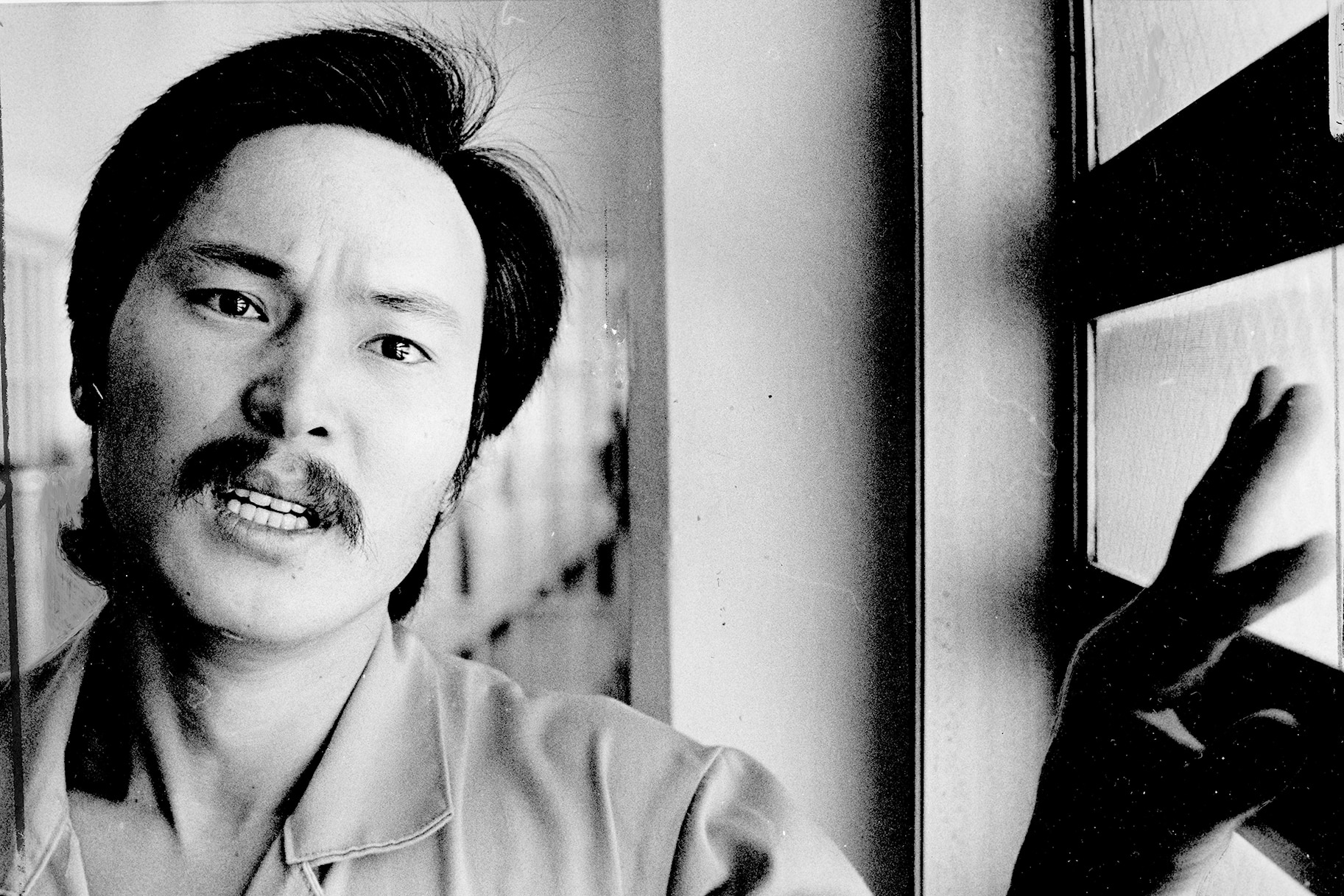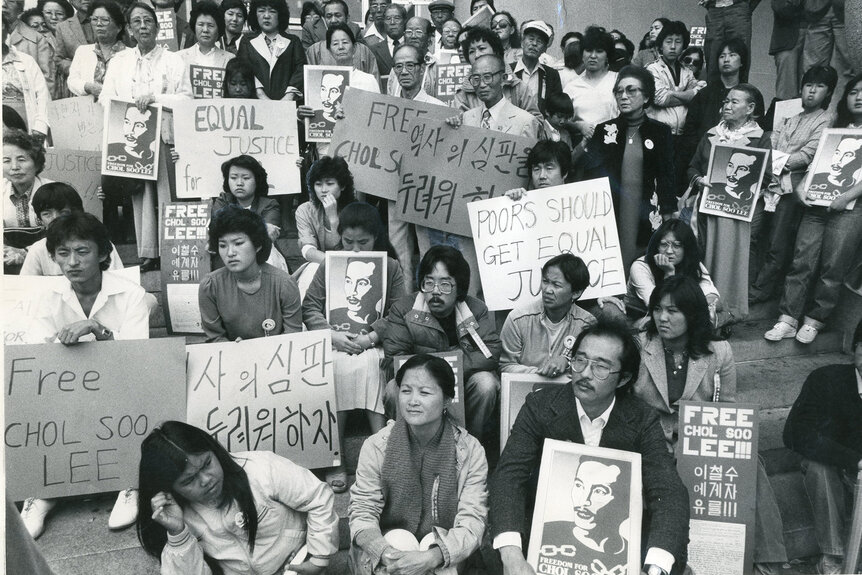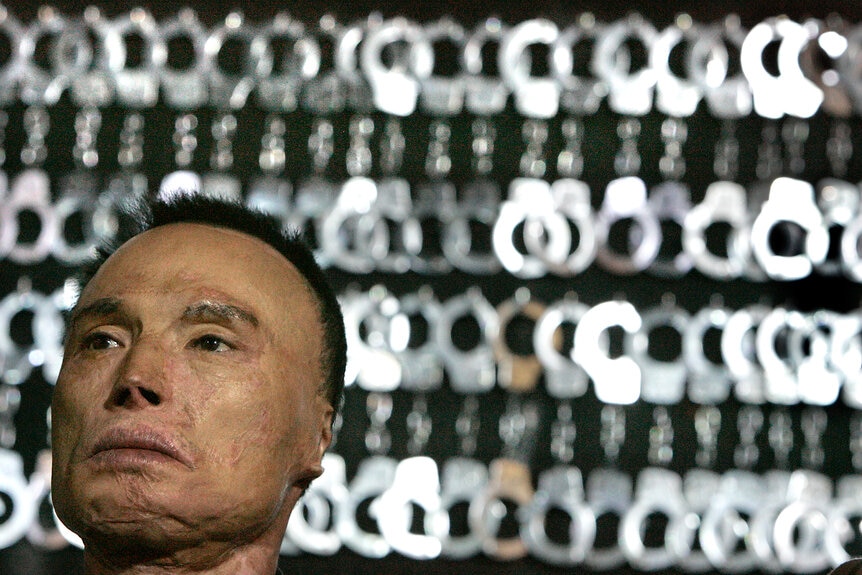Create a free profile to get unlimited access to exclusive videos, breaking news, sweepstakes, and more!
The Ballad Of Chol Soo Lee: How Asian Americans United To Free A Man Wrongly Convicted Of Murder
Chol Soo Lee seemed an unlikely candidate to inspire a movement, but that's what happened when he was wrongly convicted of a San Francisco gangland murder in 1974.

In conjunction with AAPI Heritage Month, Oxygen.com is highlighting the treatment of Asian Americans in the criminal justice system.
In the new documentary, Free Chol Soo Lee, a young, charismatic, and reflective, Lee takes a drag of his cigarette, as he tries to explain his long and complicated history with the criminal justice system.
He also answers another looming question: why his wrongful conviction for a gangland murder in San Francisco in 1973 inspired a movement among a diverse group of Asian Americans that has now been largely forgotten.
“A lot of people say I was not an angel. At the same time, I was not the devil, but whatever I was on the outside does not justify framing a person to put him in prison for a murder he did not commit,” Lee says in the film.
The movement to free him inspired a generation of activists who remained committed to fighting injustice after they won Lee his freedom following years of legal obstacles and struggles.
“The Chol Soo Lee case provides a rare and valuable glimpse into a pivotal movement in Asian American history when the Asian American movement united around one of its major, though still largely unknown, political campaigns,” Richard Kim, a professor of Asian American studies at the University of California Davis told Oxygen.com in an email. Kim edited Lee’s memoir, which was published posthumously in 2017.
He later added: “The Chol Soo Lee case also highlights the politicization and empowerment of young people, who formed the backbone of the movement. Many of the young activists involved in the grassroots movement went on to distinguished public service careers as community and political leaders. Chol Soo Lee’s case helped forge a new political consciousness among many young Asian Americans, opening their eyes to the social inequalities and workings of institutional power in U.S. society.”
First time filmmakers Julie Ha and Eugene Yi not only want to inform viewers about the case and the movement it roused, but also inspire a new generation of activists. The film also spotlights the dedicated activists like Ranko Yamada and famed journalist K. W. (Kyung Won) Lee who worked tirelessly for years for Lee’s freedom.
The movie is set for nationwide release on Aug.12, three days before what would have been Lee’s 70th birthday. He died in 2014 at 62, after years of health issues and other personal struggles. It has been receiving enthusiastic and positive reviews at film festivals across the country.
“There was one person at the Chicago film festival who after he saw the film, he’s Asian-American, he said ‘I never, ever heard of the story of Chol Soo Lee before. I never heard the name Chol Soo Lee. Now, I consider him an ancestor,’” Ha told Oxygen.com.
Lee’s troubles started long before he immigrated to the U.S. at the age of 12, reuniting with his mother. He was born in South Korea in 1952, but his mother was unwed, and her family disowned her. He lived with an aunt and uncle, who, although very poor, loved him and treated him like a son.
They owned a liquor store, and occasionally did black market transactions, Lee writes in, Freedom Without Justice: The Prison Memoir of Chol Soo Lee.
“One day, I remember my auntie gave me a candy bar from their liquor store. I think it had caramel on top and milk chocolate underneath,” Lee writes. “It was the only time in my life in Korea that I remember eating a whole candy bar by myself, and it was the most delicious candy bar I ever ate in my life.”
Lee’s move to America soured quickly. There were no services to help him acclimate. At one point he was institutionalized, but much of his troubles stemmed from the fact that he spoke Korean, and not English.
“Throughout my time in the United States, I had not met one Korean-speaking counselor or any type of guidance counselor to help me adjust my behavior or understand the challenges I faced by not speaking English,” Lee writes.
He was sent to Napa State Hospital for a 90-day psych evaluation because youth authorities thought he was schizophrenic.
“The team of doctors at Napa State Hospital found me to be a normal smart kid who had trouble speaking English and a difficult home life,” he writes.
Lee bounced in and out of juvenile detention for petty crimes. After dropping out of high school, Lee survived mostly off public assistance and menial jobs.
He was arrested after trying to “rip off some money,” from an undercover police officer. Lee was charged with grand theft and did a six-month stint in the San Francisco County Jail.
In 1973 at the age of 21, Lee was arrested for the murder of suspected gang leader Yip Yee Tak. There had been at least 16 gangland killings in roughly five years and police were under intense pressure to solve the latest case. Lee naively believed that his innocence would save him from prison.
“I was like an innocent man being taken up the steps of the gallows to be hanged, while still certain that truth would prevail – the police would see their mistake and an innocent man would be cleared,” Lee writes. “I had the simpleminded thinking of a not-guilty person, so I took the murder charge against me very lightly.”
He was convicted of first-degree murder on June 19, 1974, and sentenced to life. While incarcerated, Lee witnessed the most horrendous crimes – including rape and murder, but learned to avoid conflict by refusing to show fear and treading lightly around the Black, Latino and White prison gangs.
“Within less than one year in prison I had encountered four violent hits. I saw one convict with his head bashed in, lying on a gurney in Vacaville. In Tracy, I witnessed a man dying on a weight bench,” he writes. “Playing basketball, I just missed bumping into a killing that happened just a few feet behind me. And then I saw a convict get stabbed twenty-four times right out in the open. I was getting my experience of prison life, adapting, and surviving.”
But Lee would later acknowledge that adapting to prison life made his re-entry into society after he was released even more difficult.
“Almost monthly, someone was killed or stabbed somewhere in the prison in Tracy; it was as if the constant warring and friction soaked the whole prison in blood,” he writes. “There was nowhere in the prison system where prisoners would not stab or kill, not even the prison church.”
About four years into his prison stint a war erupted between white and Latino gangs. Lee was targeted because of his association with a Latino gang. He was warned several times that the whites were out for him.
He explains the tightrope that Asians were forced to navigate: “As Asians were so few in number, it seemed we always needed to talk to the leaders of other races whenever there were signs of problems for us. We stayed out of all problems as much as we could. We were living in a jungle where only the strongest survived, and if we Asians showed any weakness, we would perish in the mad world of prison.”
The situation turned deadly on October 8, 1977. The whites wanted Lee to reveal the names of everyone in a Latino gang, which he believed would be used for a hit list. Lee repeatedly refused to comply.
While in the yard, Lee rushed a white inmate name Morrison Needham, affiliated with the Aryan Brotherhood. Lee writes that just as Needham reached for a prison-made knife, he managed to grab it and stabbed him repeatedly. Needham died. Lee was charged with first-degree murder and was facing the death penalty.
That same year, Lee would receive a letter from K.W. Lee, a reporter with the Sacramento Union. His investigative pieces on Lee ignited a local, then national and eventual international push for Lee’s freedom. After his two-part feature was published in 1978, a legal defense committee was established on Lee’s behalf.
“In his investigative report, K.W. Lee questioned the verdict of the first trial, bringing to light a highly problematic police investigation and subsequent trial,” Kim said. “The articles specifically criticized the ignorance, indifference, and racial bias of the California criminal justice system in its treatment of Asian Americans.”
The case garnered more media attention, including the Oakland Tribune and a television news show called Asians Now. A song, The Ballad of Chol Sol Lee, was recorded and released in 1978 to raise funds and increase awareness about the case. Korean churches held meetings and fundraisers.
That same year, Lee’s attorney filed a motion arguing that Lee had been denied a fair trial in the gangland killing because evidence was withheld from the defense.
Police used a ballistic report that concluded that the gun used in the gangland killing matched the same one that left a hole in Lee’s ceiling after it was accidentally discharged. A second report determined that the bullets did not match, but it was never shared with the defense.
Additionally, a witnessed called police after the shooting and said that Lee was not the killer. That evidence was never shared with Lee’s attorney.
In the spring of 1979, Lee was convicted of first-degree murder for Needham’s death. He was sentenced to death.
Three years later, Lee was acquitted in the murder of Yip Yee Tak. In August of 1983, Lee accepted a plea bargain to a lesser charge of second-degree murder in the prison yard murder, in exchange for a sentence of time served.
His life as a free man was far from smooth. He struggled to keep a job and became addicted to cocaine. In 1990, Lee returned to prison for 18 months for a drug possession charge. In 1991, he was disfigured in a failed arson attempt while working for a Hong Kong crime triad, according to a chronology by the Asian American Bar Association of New York.
That same year he entered the FBI’s witness protection program for four years. On Dec. 2, 2014 Lee died after refusing surgery. A scene in the documentary shows him struggling to walk up the steps.
Some gave up on Lee in his post-prison life, expressing profound disappointment.
“There were a lot of people that had very unrealistic expectations about who he was. That he was going to be this angel, super model citizen – and the dude is from the streets,” David Kakishiba, who worked for Lee’s freedom, said in an article published in the Asian American Policy Review in 2010. “I think some people there that just couldn’t accept that and pushed him away.”
Ha said that she felt a heaviness at Lee’s funeral that was “beyond people grieving someone that they cared about.”
Many of the activists who worked to free Lee were at the funeral. She and Yi embarked on the documentary.
“We just decided that this story was really just too important to let stay buried because it actually felt like it had been forgotten,” Ha said. “We felt this extra motivation to tell this story while some of the firsthand sources are still alive.”
Ha was a former student of K.W. Lee, which opened doors for them. They also gained access to archival footage, recorded while Chol Soo Lee was in prison and after his release.
Yi said because they started making the film a few years after Chol Soo Lee’s death and that allowed people to speak with more candor about his life.
“The story is about pain and disappointment, but it’s also about what you do with that,” Yi said. “There’s a moment toward the end of the film where Chol Soo Lee talks about all the pain that he has been through that he never asked to experience. … Who among us can outrun all our demons, particularly for someone whose demons were so powerful.”
Lee told Kim in a 2005 interview that prison had traumatized him, making it impossible for him to adjust to freedom.
“He stated that he was ‘not able to adjust society … after living almost like a caged animal where violence is rampant and [there is] a code of conduct that is totally different from normal society. I lived in that for ten years.'”
Lee compared himself to a baby starting over again.
Yet, the case remains important for uniting a community and ultimately improving the legal system.
“Everybody knows now that you need multi-lingual capacities in police departments and prosecution offices, so you can speak to various members of the community who might be involved,” Gabriel Jack Chin, a law professor at the University of California, Davis School of Law, told Oxygen.com. Chin also noted that the case was an example of how police don’t always get it right.
“Police sometimes make mistakes, particularly when they’re dealing with a community that maybe isn’t the community that police and prosecutors come from.”
Jina Kim, an associate professor of Korean Literature and Culture at the University of Oregon, said the case united Asian communities whether they were Chinese Americans, Korean Americans, Japanese Americans, young or old and across all religious backgrounds.
“They all came together to rally for justice,” she told Oxygen.com. “It opened up a dialogue not only between Koreans living in Korea, but also the Koreans who had immigrated away from Korea and were now living in the U.S.”
Lee thanks everyone who supported him on his journey to freedom in the Postscript of his memoir: “Every day, I am very grateful for all their efforts to help me live after prison. Without them, it is very possible I would have returned back to the only life I knew since my youth and could be back in prison today.”
He ends on a heartbreakingly positive note.
“Looking back on my life, I see that even when I was a Death Row inmate, I was for more alive than many other convicts. To truly kill a person, one must rob him of his will to live. As for myself, I could never accept a scenario where I just lay down and died, for my whole existence was about survival since my birth. I had gone through so many hardships that I’d lost track of how many times I faced death. Now, during the writing of this memoir, I feel this my last journey of my life. Or maybe it could be the start of a new life.”
















